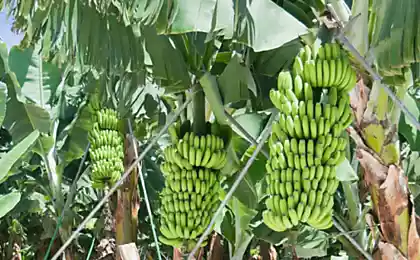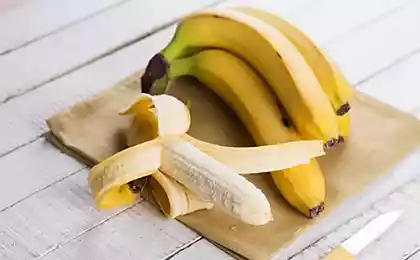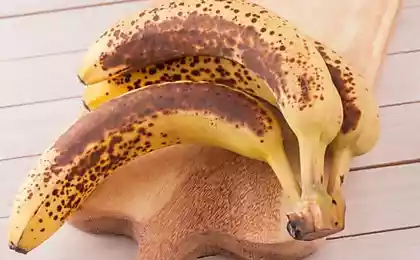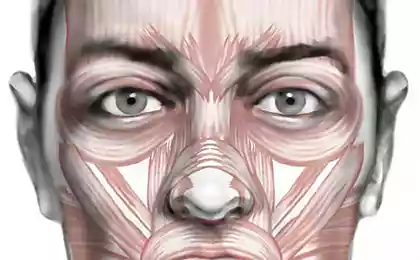165
Why bananas may soon disappear from the face of the earth
We live in a time when such a thing as bananaJust no. In winter and summer you can go to the supermarket and buy a bunch of bananas. This universal product is used in cooking, and in cosmetology, and just in everyday life.

It hardly occurs to anyone that the yellow fruit (read: berry) will ever be in short supply. That's possible! We came across the stunning news of a terrible disease affecting bananas. Should we wait? banana pandemicRead on in the article.
The BBC news portal published an article stating that bananas are in danger of disappearing completely. All the fault soil fungus Tropical Race 4 (TR4), actively spreading around the world.
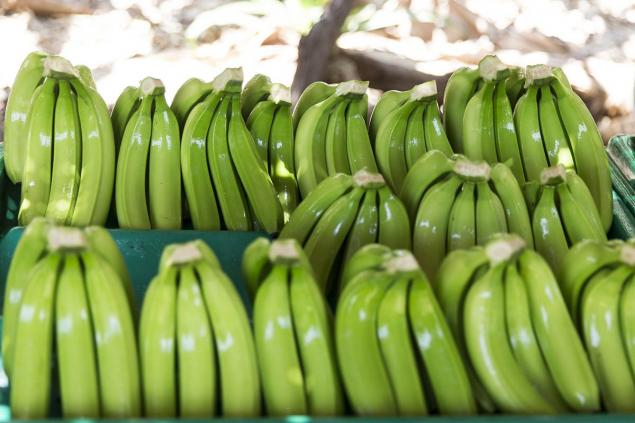
GettyImages Guess which country it all started in? Of course, in China! Recently, the disease also appeared in South America, which, by the way, is the main global supplier of bananas. Because of the disease, thousands of plantations simply stop working.
The fungus spreads through tubers, water and soil. Even a small piece of contaminated soil on shoes will be enough to bring disease to the plantation. Scientists say the affected land takes at least 30 years to recover.

Such problems will inevitably lead to higher prices for bananas. We do not even think about the role this product plays in global trade. Moreover, the inhabitants of Asia and Africa, in principle, can not imagine their lives without the yellow fruit. They are just as familiar to us as potatoes or wheat porridge.
Banana season: the problems of plantation workers are definitely not surprising, because this has happened before. For example, at the end of the XIX century, another fungus was discovered in Australia - Fusarium oysporum (TR1). At the beginning of the twentieth century, the world shuddered with the Panamanian disease. It led to the complete disappearance of a whole variety of bananas “gros Michel”. It was much bigger than modern bananas and also tasted better.
It is believed that the cultivation of bananas is difficult due to the fact that all varieties are clones. They were created from a single tuber by artificial means. In fact, a banana would not be able to reproduce without human help. And now it's his fault he's suffering.
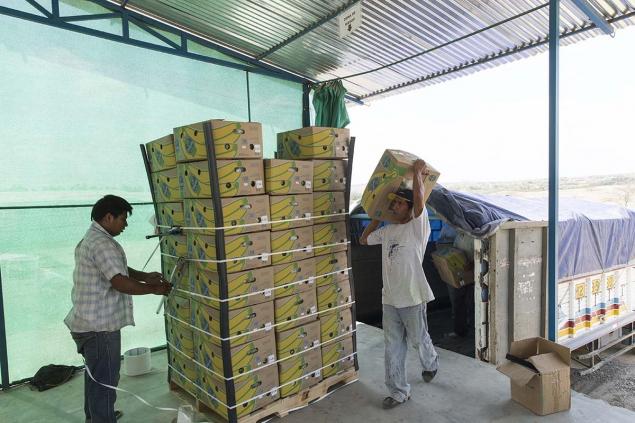
GettyImages As people learned to propagate this culture and make money from it, demand only began to grow. The price of bananas does not bite at all. Though imagine the way they go before they reach our shelves.
In fact, it was the way bananas reproduced that made them so vulnerable to disease. Now the new fungus can bring the most time to the most popular variety of “cavendish”. Tropical Race 4 is known as Panama disease. But how to stop it is still unknown.

GettyImages As we sit around and have no idea, governments in Latin America and elsewhere are sounding the alarm. The main problem is that the fungus cannot be destroyed with chemicals. It is transmitted by contact, and its spores can live on surfaces for years.
Unfortunately, all this suggests that Cavendish is doomed. It's just a matter of time. Experts believe that we have about 10-15 years for everything about everything. Who knows, perhaps during this time, scientists will find a way to get rid of the disease.

In addition, you need to understand that there are many varieties of bananas. One will disappear and another will appear. This will likely have a significant impact on supplier pricing. The size of the fruit will also change. Anyway, it's too early to get upset! We are sure that both you and your children will have time to enjoy the exotic fruit.
By the way, we want to remind you that bananas can be grown at home. It seems like a good time to think about it. Fruits, of course, may not grow, but a beautiful palm tree will please the eye!
Photo in article

It hardly occurs to anyone that the yellow fruit (read: berry) will ever be in short supply. That's possible! We came across the stunning news of a terrible disease affecting bananas. Should we wait? banana pandemicRead on in the article.
The BBC news portal published an article stating that bananas are in danger of disappearing completely. All the fault soil fungus Tropical Race 4 (TR4), actively spreading around the world.

GettyImages Guess which country it all started in? Of course, in China! Recently, the disease also appeared in South America, which, by the way, is the main global supplier of bananas. Because of the disease, thousands of plantations simply stop working.
The fungus spreads through tubers, water and soil. Even a small piece of contaminated soil on shoes will be enough to bring disease to the plantation. Scientists say the affected land takes at least 30 years to recover.

Such problems will inevitably lead to higher prices for bananas. We do not even think about the role this product plays in global trade. Moreover, the inhabitants of Asia and Africa, in principle, can not imagine their lives without the yellow fruit. They are just as familiar to us as potatoes or wheat porridge.
Banana season: the problems of plantation workers are definitely not surprising, because this has happened before. For example, at the end of the XIX century, another fungus was discovered in Australia - Fusarium oysporum (TR1). At the beginning of the twentieth century, the world shuddered with the Panamanian disease. It led to the complete disappearance of a whole variety of bananas “gros Michel”. It was much bigger than modern bananas and also tasted better.
It is believed that the cultivation of bananas is difficult due to the fact that all varieties are clones. They were created from a single tuber by artificial means. In fact, a banana would not be able to reproduce without human help. And now it's his fault he's suffering.

GettyImages As people learned to propagate this culture and make money from it, demand only began to grow. The price of bananas does not bite at all. Though imagine the way they go before they reach our shelves.
In fact, it was the way bananas reproduced that made them so vulnerable to disease. Now the new fungus can bring the most time to the most popular variety of “cavendish”. Tropical Race 4 is known as Panama disease. But how to stop it is still unknown.

GettyImages As we sit around and have no idea, governments in Latin America and elsewhere are sounding the alarm. The main problem is that the fungus cannot be destroyed with chemicals. It is transmitted by contact, and its spores can live on surfaces for years.
Unfortunately, all this suggests that Cavendish is doomed. It's just a matter of time. Experts believe that we have about 10-15 years for everything about everything. Who knows, perhaps during this time, scientists will find a way to get rid of the disease.

In addition, you need to understand that there are many varieties of bananas. One will disappear and another will appear. This will likely have a significant impact on supplier pricing. The size of the fruit will also change. Anyway, it's too early to get upset! We are sure that both you and your children will have time to enjoy the exotic fruit.
By the way, we want to remind you that bananas can be grown at home. It seems like a good time to think about it. Fruits, of course, may not grow, but a beautiful palm tree will please the eye!
Photo in article
Divorced and learned to cook green borscht himself, without it spring does not come.
What do foreigners fear when they enter our apartments?




